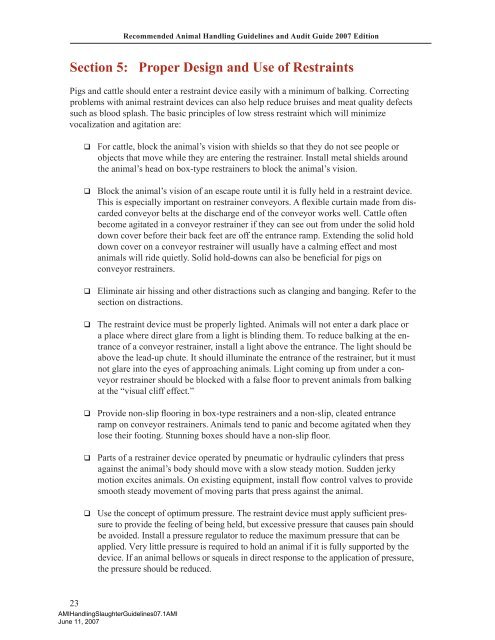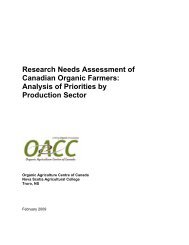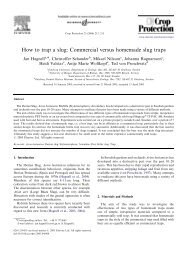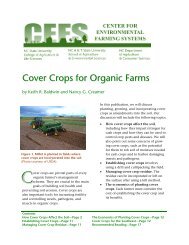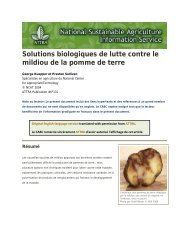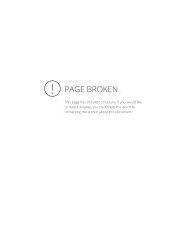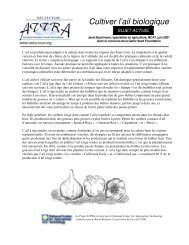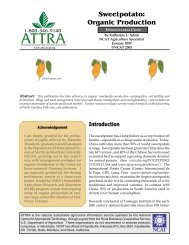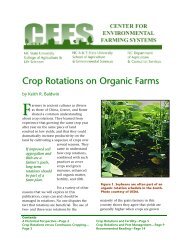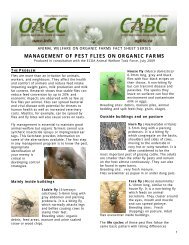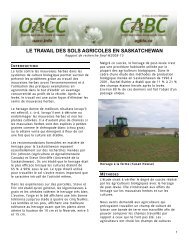Recommended Animal Handling Guidelines and Audit Guide
Recommended Animal Handling Guidelines and Audit Guide
Recommended Animal Handling Guidelines and Audit Guide
- No tags were found...
You also want an ePaper? Increase the reach of your titles
YUMPU automatically turns print PDFs into web optimized ePapers that Google loves.
<strong>Recommended</strong> <strong>Animal</strong> <strong>H<strong>and</strong>ling</strong> <strong><strong>Guide</strong>lines</strong> <strong>and</strong> <strong>Audit</strong> <strong>Guide</strong> 2007 EditionSection 5: Proper Design <strong>and</strong> Use of RestraintsPigs <strong>and</strong> cattle should enter a restraint device easily with a minimum of balking. Correctingproblems with animal restraint devices can also help reduce bruises <strong>and</strong> meat quality defectssuch as blood splash. The basic principles of low stress restraint which will minimizevocalization <strong>and</strong> agitation are: For cattle, block the animal’s vision with shields so that they do not see people orobjects that move while they are entering the restrainer. Install metal shields aroundthe animal’s head on box-type restrainers to block the animal’s vision. Block the animal’s vision of an escape route until it is fully held in a restraint device.This is especially important on restrainer conveyors. A flexible curtain made from discardedconveyor belts at the discharge end of the conveyor works well. Cattle oftenbecome agitated in a conveyor restrainer if they can see out from under the solid holddown cover before their back feet are off the entrance ramp. Extending the solid holddown cover on a conveyor restrainer will usually have a calming effect <strong>and</strong> mostanimals will ride quietly. Solid hold-downs can also be beneficial for pigs onconveyor restrainers. Eliminate air hissing <strong>and</strong> other distractions such as clanging <strong>and</strong> banging. Refer to thesection on distractions. The restraint device must be properly lighted. <strong>Animal</strong>s will not enter a dark place ora place where direct glare from a light is blinding them. To reduce balking at the entranceof a conveyor restrainer, install a light above the entrance. The light should beabove the lead-up chute. It should illuminate the entrance of the restrainer, but it mustnot glare into the eyes of approaching animals. Light coming up from under a conveyorrestrainer should be blocked with a false floor to prevent animals from balkingat the “visual cliff effect.” Provide non-slip flooring in box-type restrainers <strong>and</strong> a non-slip, cleated entranceramp on conveyor restrainers. <strong>Animal</strong>s tend to panic <strong>and</strong> become agitated when theylose their footing. Stunning boxes should have a non-slip floor. Parts of a restrainer device operated by pneumatic or hydraulic cylinders that pressagainst the animal’s body should move with a slow steady motion. Sudden jerkymotion excites animals. On existing equipment, install flow control valves to providesmooth steady movement of moving parts that press against the animal. Use the concept of optimum pressure. The restraint device must apply sufficient pressureto provide the feeling of being held, but excessive pressure that causes pain shouldbe avoided. Install a pressure regulator to reduce the maximum pressure that can beapplied. Very little pressure is required to hold an animal if it is fully supported by thedevice. If an animal bellows or squeals in direct response to the application of pressure,the pressure should be reduced.23AMI<strong>H<strong>and</strong>ling</strong>Slaughter<strong><strong>Guide</strong>lines</strong>07.1AMIJune 11, 2007


